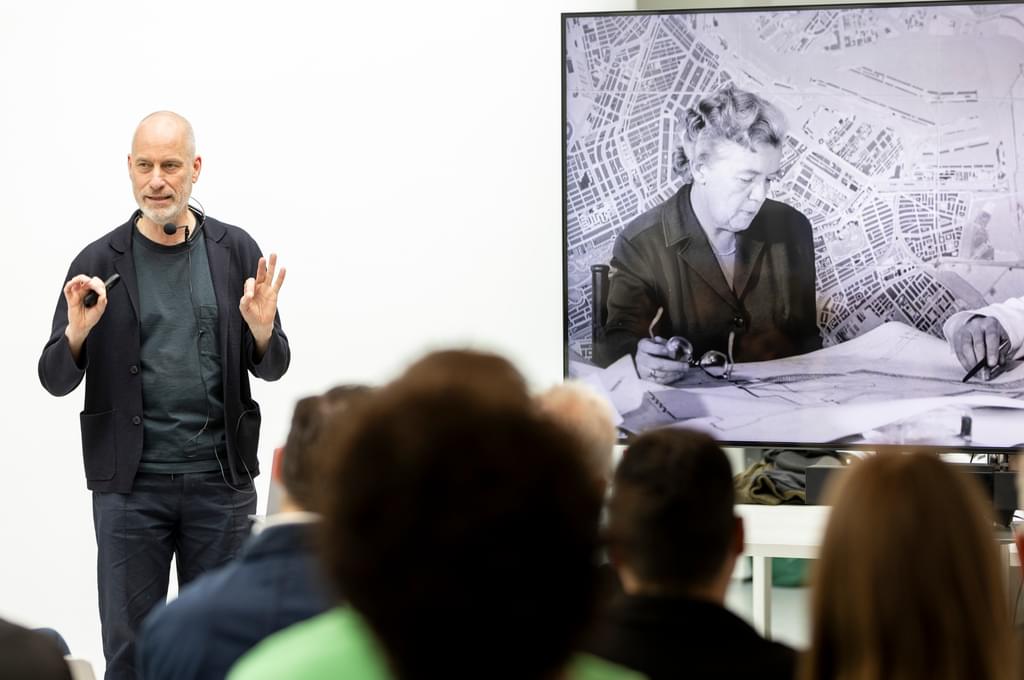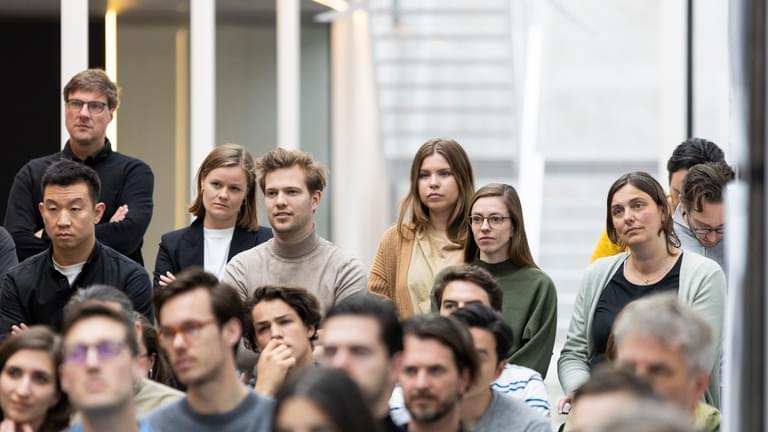In its down-to-earth, analytical approach, bureau SLA is somewhat similar to cepezed. So is their desire to stay involved in the building process for as long as possible. Yet the architecture of both firms is differs quite a lot. In the series of lectures for our 50th anniversary, Peter van Assche, founder of SLA, talked about what drives him, hence which choices he makes.
bird
Actions have consequences, Peter begins his story. Those consequences themselves are neutral. It means that what we do now has consequences for the future. Because of the enormous effect of the things we do now on the world of future generations, the present era is called the Anthropocene. Isn't it strange, Peter wonders, that the actions of, say, a bird do not affect the future. This is followed by the conclusion that as an animal, humans are a kind of misfit. That there is 'existential dissonance', as he calls it, he substantiates with photos, film clips and data.
data
In the light of actions and consequences, data are actually very important. They can help make sense of systems and they can initiate change. Although the latter is difficult, judging by the reaction - 'business as usual' - to the results of the Club of Rome study 50 years ago. If you want things to change, you also just have to take action, Peter makes clear from his projects.
attitude
Especially in the field of circular architecture, examples are important, he points out. Because circular building still revolves too much around materials (and data), instead of considering cultural change, he and the lectorate of the Amsterdam Academy of Architecture are researching the architectural vocabulary for a regenerative society. One of the 'attitudes' the researchers distinguish, they call 'invisible', where cepepezed's Temporary Court Amsterdam is used as an example. Other 'attitudes' are 'collage' and 'poetry', for example.
what does an architect actually make?



9 days, 9 years
Peter is impressed by the upscaling abilities of cepezed. SLA built a temporary pavilion for Dutch Design Week for 9 days of borrowed material. 'If you can realise this for 9 days, you can also do it for 9 years. And cepezed has already shown that.' He lists a number of issues he encounters as an exploring, experimenting architect. Why, for instance, isn't there already a simple plug-in to know the CO2 footprint of your design? Why does official life cycle analysis (LCA) have a lobbying nature? And as an architect, why would he design homes that are speculated with?
important question
In the various places where he works, Peter notices how smart and resourceful architects are. This rises hope, it seems between the lines of his story. He personally benefited greatly from a simple question, that his teacher Umberto Barbieri posed during his studies: What does an architect make? In fact, this question helped shape him as an architect. When he asks us, our responses - buildings? curating? solutions? thoughts? a certain outlook? - are all not Barbieri's sobering answer. For that was: drawings.
drawings are powerful
An architect makes drawings, simple as that. But drawings are powerful. For example, they now account for 55 percent of our society's waste, according to German research. To cause change, drawings have to be beautiful, Peter urges us. And the story has to be good, because every design comes with a story. Though language can no longer separate itself from what it causes. Which Peter illustrates with Construction in Enamel, a 1923 work for which the conceptual artist László Moholy-Nagy gave instructions to the workmen in an enamelling factory by phone.
trial and error
To understand the construction process, and to fathom what gets 'lost in translation', bureau SLA decided to build two houses in Amsterdam itself. It resulted in superior quality and a plasterer that was moved to tears. SLA thereby established experimentally that by organising construction differently, you actually get different architecture. 'Nothing new of course, for cepezed', Peter adds, 'you have always been very involved in building practises'. The questions afterwards proved that it was not all plain sailing what he told us. And that his story inspired us.
Peter van Assche is an architect and mathematician. He is the founder of bureau SLA, co-founder of Pretty Plastic, and lecturer Architecture & Circular Thinking at the Academy of Architecture in Amsterdam.
→ Mail bd@cepezed.nl or call our business development team on +31 (0)15 2150000